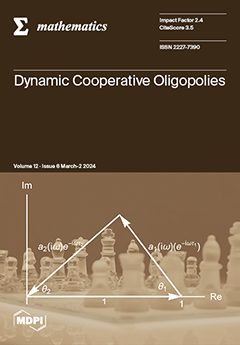The only cases where exact distributions of estimates are known is for samples from exponential families, and then only for special functions of the parameters. So statistical inference was traditionally based on the asymptotic normality of estimates. To improve on this we need
[...] Read more.
The only cases where exact distributions of estimates are known is for samples from exponential families, and then only for special functions of the parameters. So statistical inference was traditionally based on the asymptotic normality of estimates. To improve on this we need the
Edgeworth expansion for the distribution of the standardised estimate. This is an expansion in
about the normal distribution, where
n is typically the sample size. The first few terms of this expansion were originally given for the special case of a sample mean. In earlier work we derived it for
any standard estimate, hugely expanding its application. We define an estimate
of an unknown vector
w in
, as a
standard estimate, if
as
, and for
the
rth-order cumulants of
have magnitude
and can be expanded in
Here we present a significant extension. We give the expansion of the distribution of
any smooth function of
, say
in
giving its distribution to
. We do this by showing that
, is a standard estimate of
. This provides far more accurate approximations for the distribution of
than its asymptotic normality.
Full article





